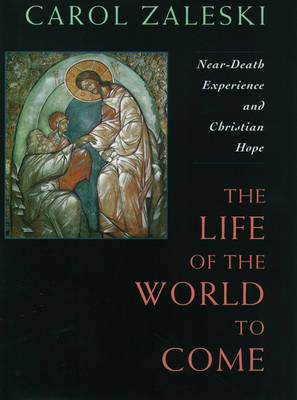Albert Cardinal Meyer Lectures
1 total work
Critics of religion have argued that Christianity's success stems from its promise of eternal life, that people become Christian at bottom merely to cope with their fear of death. Contemporary theologians and philosophers, highly sensitive to this charge, tend to skirt the issue of life after death. To speak of the afterlife is at best to engage in wishful thinking, at worst to descend to the level of pop religion, encounters with angels, and UFO abductions. In The Life of the World to Come, however, Carol Zaleski asks the question, "Are we rationally and morally entitled to believe in life after death?" and answers with a spirited and emphatic "yes."
Drawing on a rich and varied array of sources ranging from Plato to St. Augustine to Heidegger, from the samurai warrior code to New Yorker cartoons to conversations with her young son, Zaleski not only brilliantly defends the right of Christians to believe in a life after death, but she illuminates the real value of imagining what that life might be like. It is important to spiritual maturity, she says, for the believer to be able to imagine a state of complete fulfillment, of oneness with God. And a vision of the ideal society, the heavenly communion of saints, is essential to the ordering of both our own lives and the society in which we live. Zaleski organizes her defense into three parts corresponding to the three great hours of the Divine Office, the cycle of prayers that is the heart of monastic life: Lauds at dawn's first light, Vespers at twilight, and, with the coming of night, Compline. In this liturgy of darkness and light, sleeping and waking, Zaleski discovers a poignant awareness of the ever-presentness of death in life and life in death, an awareness that we sadly miss amidst the medical and technological wonders of modern life. The timeless prayers and rituals of classical Christianity, she finds, are not a distraction from life, but a way of orienting oneself to life. Zaleski stresses the importance of the testimony of near-death experiences for Christian thinking about the afterlife. While these experiences do not by themselves provide objective evidence of life after death, she says, neither should they be dismissed as wishful thinking merely because research shows them to be influenced by cultural expectations. Zaleski asks "If God, the unknowable, wishes to be known, what other recourse does God have but to avail himself of our images and symbols, just as he has availed himself of our flesh?"
This book will inspire, challenge and console readers seeking to confront their own hopes and fears of death and the afterlife with dignity, rather than despair or denial. Candid, surprising, and profoundly wise, it will fascinate anyone intrigued by the strange and wonderful phenomena of near-death experience and the beauty and mystery of the unknown.
Drawing on a rich and varied array of sources ranging from Plato to St. Augustine to Heidegger, from the samurai warrior code to New Yorker cartoons to conversations with her young son, Zaleski not only brilliantly defends the right of Christians to believe in a life after death, but she illuminates the real value of imagining what that life might be like. It is important to spiritual maturity, she says, for the believer to be able to imagine a state of complete fulfillment, of oneness with God. And a vision of the ideal society, the heavenly communion of saints, is essential to the ordering of both our own lives and the society in which we live. Zaleski organizes her defense into three parts corresponding to the three great hours of the Divine Office, the cycle of prayers that is the heart of monastic life: Lauds at dawn's first light, Vespers at twilight, and, with the coming of night, Compline. In this liturgy of darkness and light, sleeping and waking, Zaleski discovers a poignant awareness of the ever-presentness of death in life and life in death, an awareness that we sadly miss amidst the medical and technological wonders of modern life. The timeless prayers and rituals of classical Christianity, she finds, are not a distraction from life, but a way of orienting oneself to life. Zaleski stresses the importance of the testimony of near-death experiences for Christian thinking about the afterlife. While these experiences do not by themselves provide objective evidence of life after death, she says, neither should they be dismissed as wishful thinking merely because research shows them to be influenced by cultural expectations. Zaleski asks "If God, the unknowable, wishes to be known, what other recourse does God have but to avail himself of our images and symbols, just as he has availed himself of our flesh?"
This book will inspire, challenge and console readers seeking to confront their own hopes and fears of death and the afterlife with dignity, rather than despair or denial. Candid, surprising, and profoundly wise, it will fascinate anyone intrigued by the strange and wonderful phenomena of near-death experience and the beauty and mystery of the unknown.
